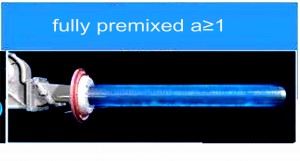- Afrikaans
- Albanian
- Amharic
- Arabic
- Armenian
- Azerbaijani
- Basque
- Belarusian
- Bengali
- Bosnian
- Bulgarian
- Catalan
- Cebuano
- China
- China (Taiwan)
- Corsican
- Croatian
- Czech
- Danish
- Dutch
- English
- Esperanto
- Estonian
- Finnish
- French
- Frisian
- Galician
- Georgian
- German
- Greek
- Gujarati
- Haitian Creole
- hausa
- hawaiian
- Hebrew
- Hindi
- Miao
- Hungarian
- Icelandic
- igbo
- Indonesian
- irish
- Italian
- Japanese
- Javanese
- Kannada
- kazakh
- Khmer
- Rwandese
- Korean
- Kurdish
- Kyrgyz
- Lao
- Latin
- Latvian
- Lithuanian
- Luxembourgish
- Macedonian
- Malgashi
- Malay
- Malayalam
- Maltese
- Maori
- Marathi
- Mongolian
- Myanmar
- Nepali
- Norwegian
- Norwegian
- Occitan
- Pashto
- Persian
- Polish
- Portuguese
- Punjabi
- Romanian
- Russian
- Samoan
- Scottish Gaelic
- Serbian
- Sesotho
- Shona
- Sindhi
- Sinhala
- Slovak
- Slovenian
- Somali
- Spanish
- Sundanese
- Swahili
- Swedish
- Tagalog
- Tajik
- Tamil
- Tatar
- Telugu
- Thai
- Turkish
- Turkmen
- Ukrainian
- Urdu
- Uighur
- Uzbek
- Vietnamese
- Welsh
- Bantu
- Yiddish
- Yoruba
- Zulu
Novemba . 19, 2024 08:37 Back to list
cast iron sewage pipe
Understanding Cast Iron Sewage Pipes Benefits and Applications
Cast iron sewage pipes have been a fundamental element in civil engineering and plumbing for centuries. Originally introduced in the 19th century, the use of cast iron in sewage systems has transformed urban infrastructure, allowing for efficient waste management in growing cities. Today, despite the emergence of various modern materials, cast iron remains a critical choice for many plumbing systems. This article explores the properties, benefits, and applications of cast iron sewage pipes.
Properties of Cast Iron Sewage Pipes
Cast iron is an alloy of iron that contains 2-4% carbon along with varying amounts of silicon and manganese. This composition grants cast iron several advantageous properties, making it particularly suited for sewage applications. One of its most notable characteristics is its strength; cast iron pipes can withstand significant pressure and mechanical stress, which is essential for underground sewage systems that must endure heavy loads from soil and traffic above.
Additionally, cast iron has excellent corrosion resistance. When properly coated, these pipes can last for decades without deteriorating, even when exposed to the harsh conditions of sewage environments. Moreover, the smooth interior surface of cast iron pipes minimizes friction, promoting efficient flow of wastewater and reducing the risk of blockages.
Benefits of Cast Iron Sewage Pipes
1. Durability Cast iron pipes are remarkably durable, often lasting over 50 years and sometimes even exceeding a century with proper maintenance. The long lifespan of these pipes makes them a cost-effective solution in the long run, despite higher initial costs.
2. Strength The inherent strength of cast iron allows these pipes to handle heavy loads and pressure, making them ideal for both residential and commercial applications. Their ability to endure ground movement and differential settlement is particularly beneficial in areas with unstable soils.
cast iron sewage pipe

3. Sound Insulation One of the unique benefits of cast iron is its sound attenuation properties. The density of cast iron helps to dampen sounds produced by flowing water and waste, making it an excellent choice for installations in residential settings where noise reduction is desirable.
4. Environmental Benefits Cast iron is a recyclable material, and its long lifespan means that fewer replacement pipes end up in landfills, making it an environmentally friendly option. Additionally, the longevity and durability of cast iron pipes contribute to a reduced need for repairs and maintenance.
Applications of Cast Iron Sewage Pipes
Cast iron sewage pipes are utilized in a variety of settings. In new construction projects, they are frequently used for both sewer and drain lines, particularly in urban areas where underground space is at a premium. Their ability to handle high volumes of wastewater makes them suitable for municipal sewer systems that service large populations.
In addition to municipal applications, cast iron pipes are popular in commercial buildings, especially in high-rise developments where plumbing systems must navigate complex layouts. Their sound-dampening qualities are particularly valued in spaces like apartment buildings, schools, and hospitals, where noise can be a significant concern.
Furthermore, cast iron pipes can be used in retrofitting older systems, offering a reliable solution for replacing outdated, deterioration-prone materials. Their compatibility with existing plumbing frameworks allows for easier integration, making renovations smoother and less disruptive.
Conclusion
While newer materials like PVC and HDPE may offer some advantages in specific contexts, cast iron sewage pipes remain a tried-and-true option for many plumbing applications. Their durability, strength, environmental benefits, and sound insulation properties make them a valuable choice for both new constructions and renovations. As urban infrastructure continues to evolve, the importance of reliable, sustainable materials like cast iron cannot be overstated, ensuring effective waste management for generations to come.
-
8mm Thin-Walled Cast Steel Manhole Cover Pallet Bottom Ring | Durable
NewsAug.04,2025
-
Premium Cast Iron Water Main Pipe: Durable, Corrosion-Resistant
NewsAug.03,2025
-
Durable Cast Iron Water Mains | AI-Optimized Systems
NewsAug.02,2025
-
High-Efficiency Propane Boiler for Baseboard Heat | Save Energy
NewsAug.01,2025
-
Premium Source Suppliers for Various Gray Iron Castings
NewsJul.31,2025
-
Durable Cast Iron Water Main Pipes | Long-Lasting
NewsJul.31,2025


